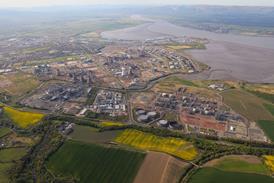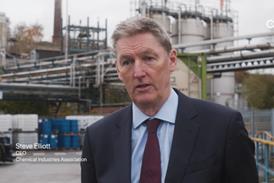As a sector, we fully support the Government’s proposal to introduce dynamic allocation as a much fairer and more competitive form of free allocation. Such an approach would mitigate the issues associated with historic crises, ensure a site’s allocation more closely aligns to its production, and reduce the drag that lagging free allocation levels can have on growth. We ask the Government to respond to its consultation, taking forward this more rational and prudent proposal.
Between April and June of this year (2025), the UK Emissions Trading Scheme (ETS) Authority carried out a baseline data collection exercise to gather historic activity level (HAL) data from UK ETS participant sites, for the period 2019-2023. The average activity level (i.e. the average level of production) during this baseline period will be used to set the rate of free allocation a site will receive in the second free allocation period (2027-2030).
Current free allocation methodology
The basic quantity of free allowances that eligible operators can receive is determined by historical activity level (HAL), multiplied by the relevant benchmark and carbon leakage exposure factor (CLEF).
During the allocation period, operators submit an activity level report (ALR) at the end of each scheme year. If an operator’s average activity level in any two-year period increases or decreases by 15% or more relative to their historic activity level (HAL), an activity level change (ALC) is triggered. Free allocation is recalculated for the scheme year following the two-year period in which the threshold was exceeded, using the two-year average in place of HAL. The threshold for subsequent ALC within the allocation period increases at 5% intervals: e.g., the threshold for a second ALC is 20%, the threshold for a third is 25%, and so on.
This is problematic because the period in question (2019-2023) contains anomalous production levels relating to first COVID-19 and then the energy price crisis that accompanied the start of the Russia-Ukraine conflict. As things stand, UK ETS participants that were negatively impacted by these crises can expect a lower level of free allocation during the period 2027-2030, at a point in time when the UK sector should be on the path to recovery and aiming to increase its production. The result would be a mismatch of production and free allocation that could harm the competitiveness of UK sites and act as a break on growth.
The Government consulted on introducing a more dynamic approach to free allocation in their 2023 consultation UK ETS Free Allocation Review (pages 13-15). The proposed approach would see free allocation adjusted after the end of each scheme year to reflect actual activity at sites. In their justification for a new dynamic approach the Government makes the following case:
The use of HAL means that free allocation is based on historical activity during the baseline period rather than actual activity during the allocation period, and therefore may not accurately reflect current activity levels. While the ALC mechanism ensures that larger changes in activity are taken into account, the minimum 15% threshold allows changes below this level to occur without any impact on free allocation. For example, operators who increase activity by less than the threshold do not receive any additional free allocation even if the increased activity results in them facing a higher carbon cost, which may create an incentive to limit production. Conversely, operators who reduce activity by less than the threshold do not lose any free allocation even if the reduction in activity results in them facing a lower carbon cost, which may create an incentive to reduce production.
As a sector, we fully support the Government’s proposal to introduce dynamic allocation as a much fairer and more competitive form of free allocation. Such an approach would mitigate the issues associated with historic crises, ensure a site’s allocation more closely aligns to its production, and reduce the drag that lagging free allocation levels can have on growth. We ask the Government to respond to its consultation, taking forward this more rational and prudent proposal.






















